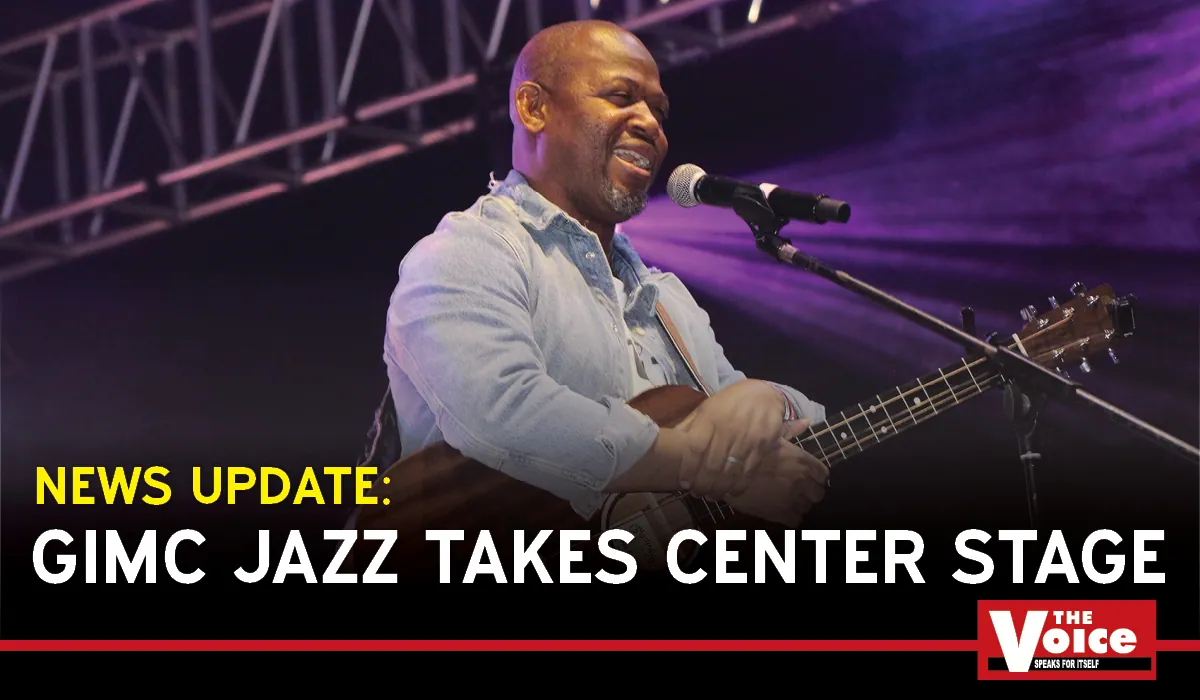By Chawada Malabe
Copyright thevoicebw

This past weekend, the Gaborone International Music and Culture Week (GIMC) marked its 11th year with a show that solidified its reputation as Botswana’s premium jazz event.
The setting was perfect: scenic Bojanala Waterfront overlooking Gaborone Dam, mild weather, huge crowd and an electric atmosphere.
From Zimbabwe to South Africa, jazz lovers crossed borders to experience a musical spectacle that showcased the very best of the continent as well as Botswana’s own artistic brilliance.
The show’s success is not by chance, with founder and event organiser, Fish Pabalinga explaining much thought and care goes into putting the line-up together.
“Every year from January to March we take it to our social media as well as ask our patrons who they would like to see perform. Apart from that, we also do our research throughout the year from media outlets just to see who is releasing new music which the crowd is responding to,” he revealed.
The stage itself became a story of Africa told in rhythm and melody. Botswana’s own music greats stood tall, with the country’s most admired jazz group, Sereetsi and the Natives, delivering a spellbinding performance, reminding everyone why they are icons.
Rising stars like the WDP Band proved the future of local music is in safe hands, while the powerful Women of Jazz Nnunu Ramogotsi,
Punah Molale, and Kearoma Rantao brought elegance, passion and unmistakable artistry.
But GIMC Jazz is famous for blending borders, and this year was no different.
South Africa’s Encore Band set the tone with their rich harmonies, while household names Mafikizolo and Lira drew roars of admiration from the crowd.
In a deeply moving gesture, Mafikizolo closed their set with a heartfelt tribute to departed star, ATI, a moment that resonated with every soul in attendance.
Beyond the music, GIMC’s economic footprint was undeniable. Local businesses thrived. Air Botswana kept the skies busy with flights, lodges and hotels brimmed with international visitors, while jobs were created for sound engineers, stage crews, security, and service staff.
The festival also gave space for local entrepreneurs to shine, with stalls displaying everything from African-print couture and leather crafts to food, makeup and lifestyle products.
“GIMC Jazz is more than just a festival, it is the biggest supporter of local value chain!” highlighted Pabalinga.
And it wasn’t just music lovers who showed up. The festival attracted a glittering, high-profile crowd that read like a ‘who’s who’ of Botswana.
Members of Parliament mingled with seasoned business moguls, while celebrities, influencers and local divas brought star power to the audience.
From corporate titans networking over cocktails to socialites dressed in their finest, the crowd itself was a performance of style, influence and national pride.
The presence of such a diverse and prominent audience underscored GIMC’s stature as not only an entertainment event but also a serious cultural and economic driver.
Crucially, the festival also positioned itself as a gateway for Batswana artists to break into international circuits.
Organisers confirmed that partnerships with other festivals in the region are growing stronger. A notable highlight was the attendance of a representative from South Africa’s Mahika Mahikeng Festival, who was actively scouting Botswana talent for their upcoming event.
“This kind of collaboration is exactly what GIMC is built on, bridging borders, building networks, and ensuring that Botswana’s artists are booked, celebrated, and elevated far beyond home soil!” declared Pabalinga.
With its unmatched blend of artistry, culture, commerce and star power, GIMC has firmly cemented its position as the biggest jazz festival in the country, and a platform that ensures Botswana’s music continues to echo across Southern Africa and beyond.



